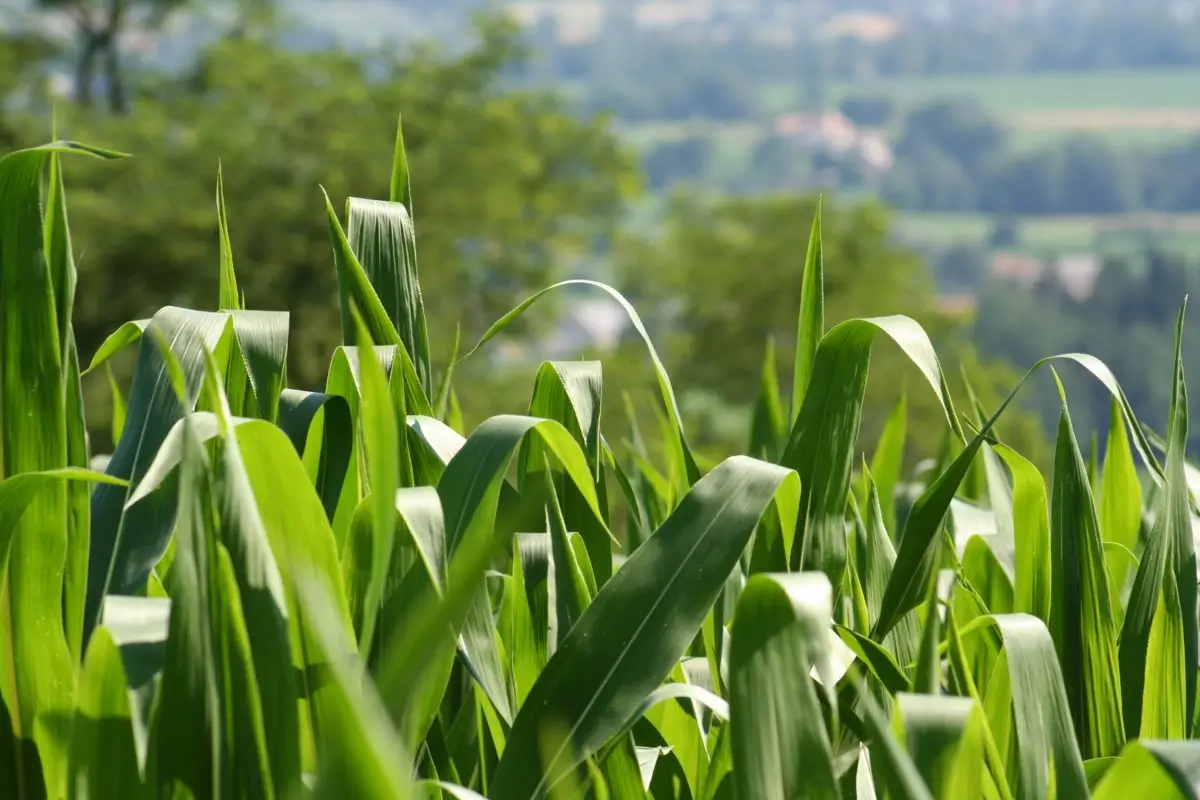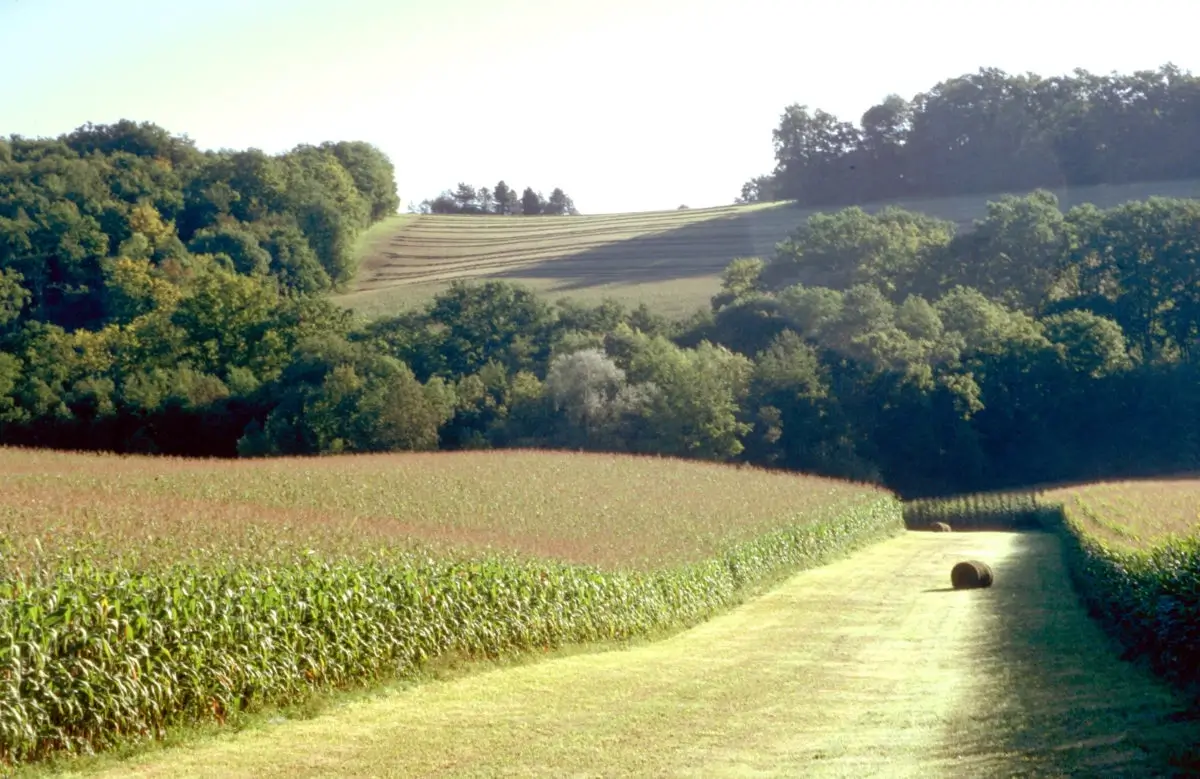Planting
The choices made at the time of planting and throughout the crop cycle (fertilisation, irrigation and harvesting) are decisive in establishing the yield and maintaining its potential until the end of the cycle.
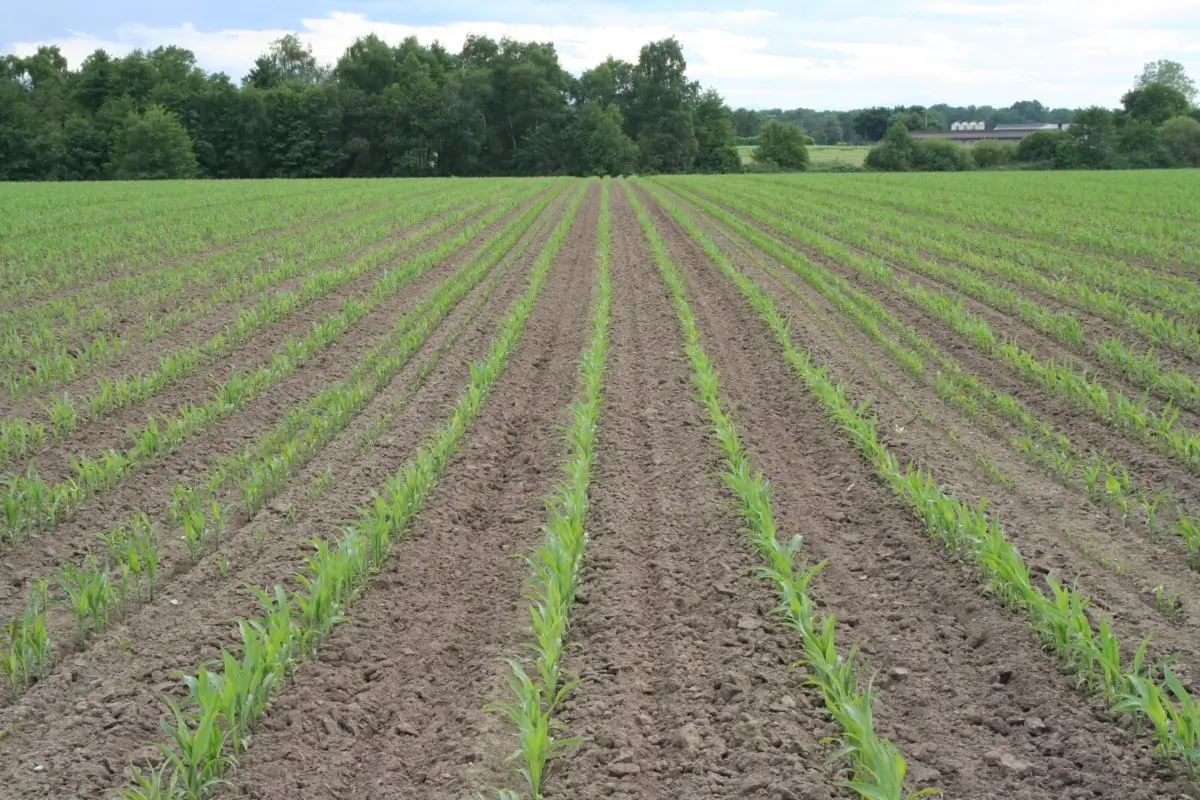
Technical itinerary
Maize is an all-purpose plant, characterised by its short cycle and high potential per hectare. In Europe, it is not uncommon for its yield to exceed 10 tonnes per hectare under the right conditions. It owes its performance to its highly efficient metabolism.
Maize belongs to the family of so-called C4 plants, like sorghum or sugar cane, which gives it a number of advantages with regard to the use of inputs (water and nitrogen) and a spectacular capacity to produce biomass in a period that rarely exceeds 7 months.
The cycle takes place in 2 stages. The first is between sowing and flowering. This involves the plant growing parts such as leaves (to capture sunlight), roots (for mineral elements and water) and male and female reproductive organs. In a second phase, the grain swells, photosynthesis continues and the accumulated reserves are transferred to the ear.
Sowing date
The choice of sowing date is a matter of compromise. However, the aim should be to “occupy the soil as quickly as possible” in line with the climate so that the chosen variety can express its full potential. The soil must be sufficiently warm but not dry. It is estimated that a temperature between 6 and 8°C (generally from 1 April in the northern hemisphere) is ideal for germination. Note that, depending on the type of soil, the warming capacity varies due to the phenomenon of solar radiation absorbed at the surface.
Regarding soil preparation before sowing, it is essential to create a favourable soil structure for rooting and emergence, in other words to ensure that the soil is as homogeneous as possible, with sufficient fine soil. The seed must then be in contact with moisture and be sufficiently aerated. The rule of thumb is to sow the seeds at a depth exceeding 4-5 cm to protect them from frost, drought and birds. However, the depth should not exceed 9 cm, so that the seed reserves are not depleted before the plant emerges at the surface. Moreover, if it remains in the soil for too long, it will be more exposed to parasites.
3 factors to remember, depending on the situation:
– If the soil is dry on the surface, either sow on the surface on dry soil or at depth in more humid soil.
– In the Eastern European chernozems, the surface soil is often powdery due to frost, so the seed should be buried 4-5 cm deep in the compacted soil.
– Drained soils
With regard to density, the earliness criterion should be considered. The later the plant, the more leaves it will have. This type of variety will therefore optimise light capture more easily at a lower plant density per hectare. On the other hand, plants in light soils respond more favourably to a higher plant density per hectare than those in heavier soils.
Finally, note that in certain conditions, fertilisation at the time of planting (starter fertiliser) may be required in the case of a long, cold spring season.
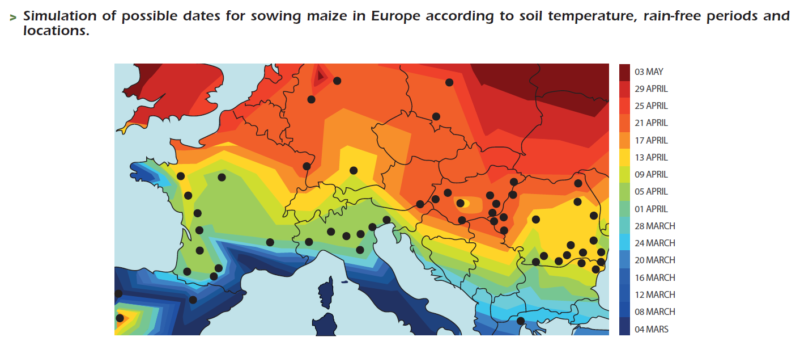
For the past ten years or so, the technique of sowing under black polythene sheets has attracted some farmers. The sheets act as a greenhouse, retaining soil moisture and providing protection against frost and pest damage. This technique protects the plant until about the 10-leaf stage. Farmers use this technique to harvest earlier and benefit from increased yields. However, the planting costs are inevitably higher.
Fertilisation
Like most crops, maize requires fertilisers for growth. Fertilisation is a major productivity factor. It is essential to know the needs of the plant and the growth periods when these needs arise, but also what the soil is capable of providing beforehand to avoid over-fertilisation.
The need for the main elements such as nitrogen, phosphorus and potassium is decisive during the first part of the cycle, from sowing to flowering.
Nitrogen
It should always be emphasised that the right amount of nitrogen should be applied, depending on the needs of the plant and the soil residues. The needs of the plant must be adjusted according to the chosen yield potential.
An initial nitrogen application in the form of starter fertiliser should be enough early in the cycle, as maize does not absorb nitrogen at the very beginning. This becomes important from the 6-leaf stage onwards (15 days after flowering). Fertilisation at this stage will be all the more effective if fertiliser application is localised.
Preference should therefore be given to split fertiliser application in situations where the required dose exceeds 100 units. If irrigation or mechanical cultivation is not guaranteed to ensure the proper benefits of the input, then this should be concentrated at the time of sowing.
Note that organic nitrogen is readily absorbed by maize, so it should not be neglected as a resource.
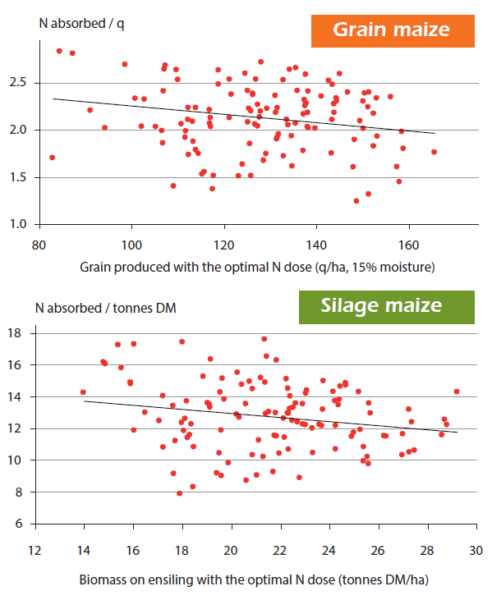
Considerations to factor in when dosing nitrogen:
– Determine your yield target (consider the variety, the characteristics of the plot, the technical itinerary and the yield history, depending on your context)
– Factor in the supply of nitrogen from the soil and efficient fertiliser use values
– Split the input in cases of high fertiliser requirements
Trace elements
Zinc and magnesium deficiencies are the most common, but foliar remedies at the onset of symptoms are often effective. Long-term management is the best approach. The chemical composition of the soil should be analysed regularly in order to correct the basic inputs as required.
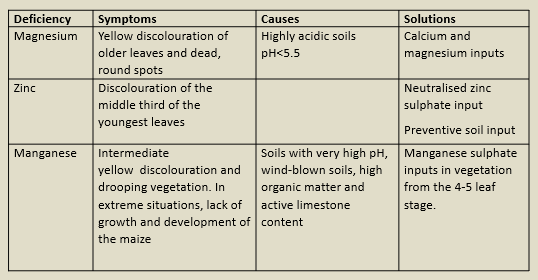

Irrigation
Maize is a less water-intensive crop than most other cereals. Above all, it is more efficient in its use of water. However, supplying water via irrigation improves performance, provided that the needs of the plant are clearly identified according to its growth stage. It is also important to be aware of the soil’s water-holding capacity, as the soil’s reserve acts as a buffer throughout the cycle. Finally, it is essential to identify weather conditions that induce evapotranspiration by the plant, in order to meet its needs.
Irrigation water is an exogenous input and it is important to understand its availability and cost in order to ensure technical and economic performance for the farmer. In terms of equipment, hose reel irrigation systems are easy for farmers to use as they are movable and versatile. They are therefore well suited to small plots. Pivot- and ramp-irrigation systems are preferable for very large areas.
Maize generally needs little or no water before the 10-leaf stage, except in uncommon cases where irrigation should be considered as from the time of planting. The need for water increases after the 10-leaf stage. This need is highest between the stem elongation and the grain formation stage. The risk of drought is highest during this key period (July and August).
For an “average” European climate, the requirement is estimated at about 5 mm per day for the period from 3 weeks before flowering to 3 weeks after flowering. When water is more scarce, irrigation should be concentrated around the time of flowering.
In order to adjust the irrigation and when it is triggered, farmers have so-called water balance methods available to ascertain the requirement, and tensiometric probes to assess the water status of the soil.
The choice of variety and different agricultural approaches are also key factors for water resource management throughout the crop cycle. Newer varieties are more resistant to longer periods of stress.

